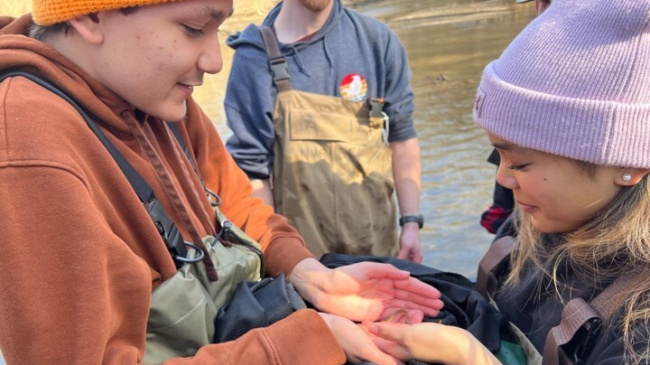For World Oceans Day offsite link on June 8, we are highlighting eight people who inspire us to protect our blue planet. Ranging in age from eight to 73, these ocean heroes share not only a passion for the ocean, but also a commitment to taking action.
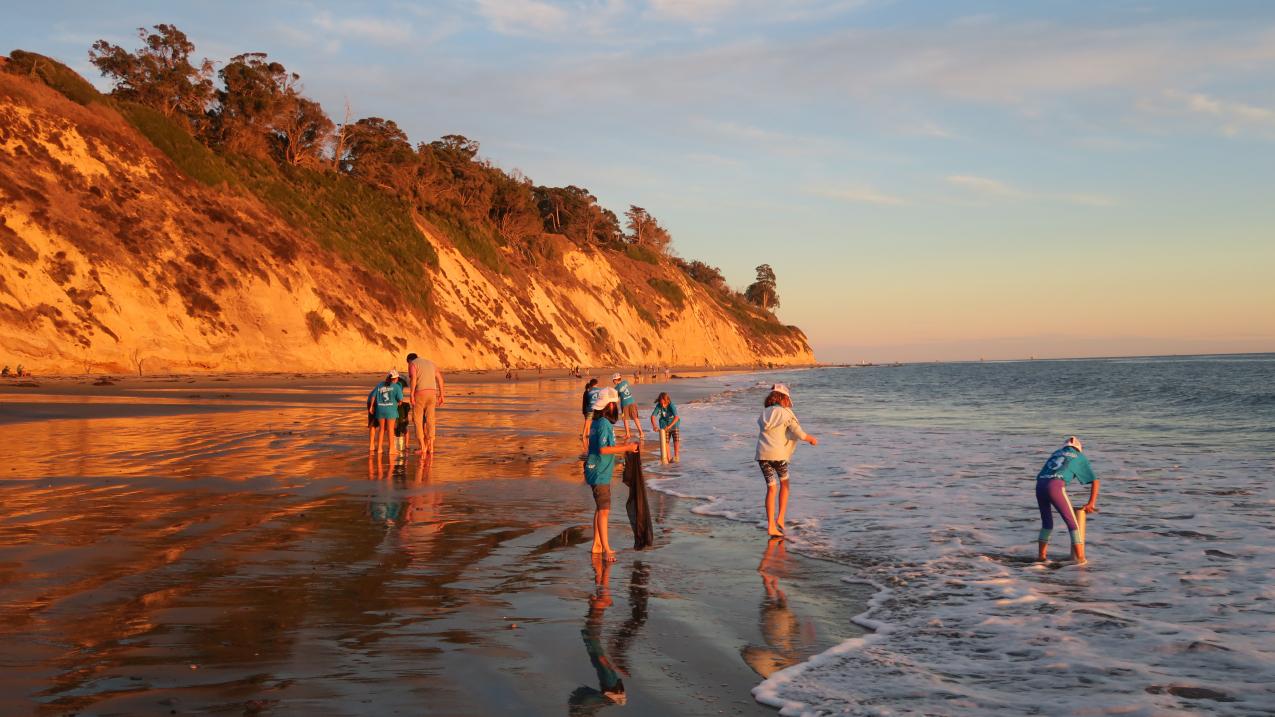
As part of their commitment to protect and conserve the ocean, students from Adams Elementary in Santa Barbara, California, monitor a nearby sandy beach. (Image credit: Claire Fackler/NOAA)
This year, the theme of World Oceans Day is preventing plastic pollution and encouraging solutions for a healthy ocean. These examples show how NOAA supports people at every age and every stage in their endeavors to understand and protect the ocean.
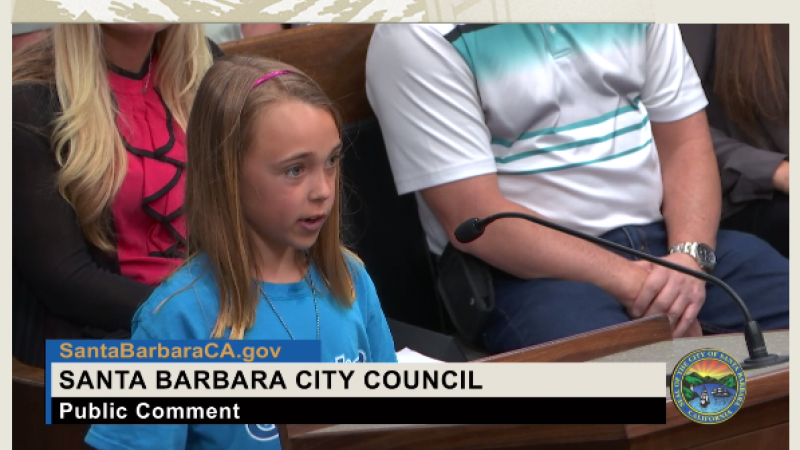
Adams Elementary School third- through sixth-grade students take their love for the ocean far beyond their classroom walls. Students at this low-income school in Santa Barbara serve as NOAA Ocean Guardian Ambassadors, engaging in hands-on ocean science as well as teaching others about the ocean issues affecting their community. Recently, these ocean heroes have focused their efforts on reducing single-use plastic consumption locally. They are currently working alongside the Community Environmental Council offsite link and Santa Barbara Channelkeeper offsite link on a campaign to encourage restaurants city-wide to provide straws only if customers actively request one. The Ocean Ambassador team spoke before the Santa Barbara City Council to ask for their support in this endeavor, where Valentina T. told the council that “We should join other cities like Santa Cruz and Malibu to set the example for being the solution to ending plastic pollution.”
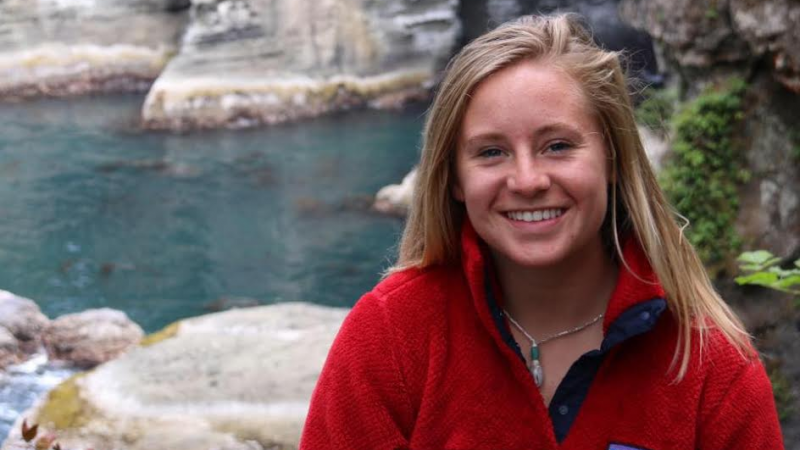
Hannah MacDonald’s first SCUBA dive brought her into the waters of Thunder Bay National Marine Sanctuary in Alpena, Michigan. Since then, she’s learned about ocean and cultural interconnectedness in the Channel Islands National Marine Sanctuary and developed marine education programs in the Olympic Coast National Marine Sanctuary as a NOAA Hollings scholar. Hannah credits these three sanctuaries for the major moments that inspired her to take action for the ocean. “Each place has brought me closer to becoming the change agent I know I can be,” says the recent Michigan State University graduate. And she really has become a powerful change agent. Hannah was recently named an environmental education “30 under 30” offsite link for her work founding her university’s largest environmental organization, speaking and writing about the power of youth, and coordinating EarthEcho’s International offsite link Youth Leadership Council.
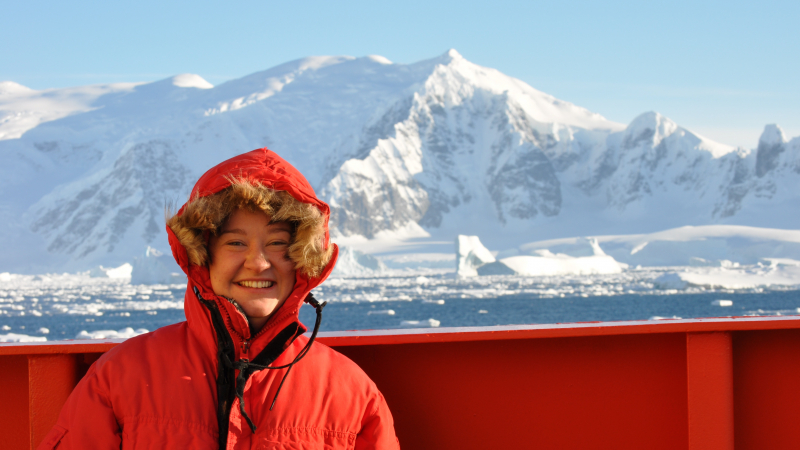
Alexa Sterling began her marine science journey as a high school intern at NOAA Woods Hole Science Aquarium, where she learned about NOAA science firsthand. This sparked her to pursue a bachelor’s in marine biology from the University of North Carolina Wilmington with support from the NOAA Hollings scholarship and work toward both a master’s and a doctoral degree at the University of Rhode Island. Her research seeks to better understand phytoplankton, the tiny plant-like organisms in the sea that produce half of the oxygen we breathe. This research has taken her from Narragansett Bay, Rhode Island, all the way to Antarctica. When she’s not collecting phytoplankton samples in far-flung locations or studying them in her lab, Alexa leads her school’s chapter of the Society for Women in Marine Science. When mentoring, she reminds aspiring scientists not to be too hard on themselves. “Often you see the highlights of people’s stories. You see their accomplishments,” she says. “Behind all that is a bunch of failures and rejections.” Alexa says to just keep pushing through those failures until something works out. “As scientists, we’re trying to do the best science we can to chip away at the truth and hopefully add some benefit to society.”
Symone Johnson
is also the host of the popular video series, NOAA Ocean Today Every Full Moon.
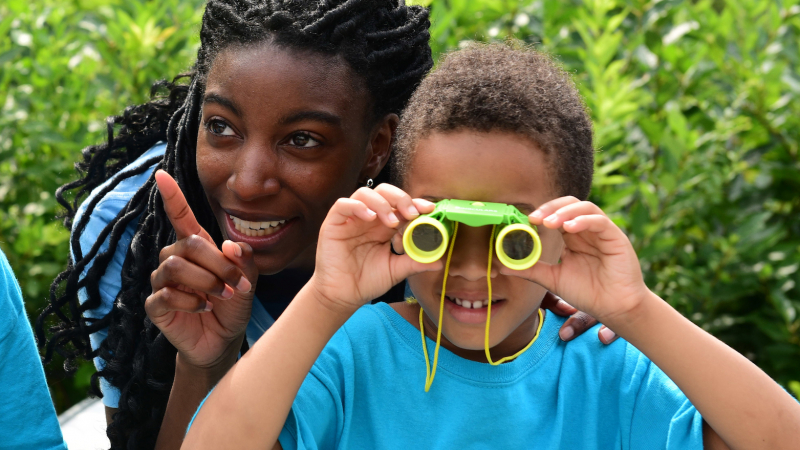
Although Symone Johnson grew up near the coast in Baltimore, Maryland, she didn’t think much about the ocean until she volunteered at the National Aquarium offsite link through their high school summer program. “After I finished it, I knew I was going to study marine science,” she says. Symone began her studies at Hampton University, where she was named a NOAA Educational Partnership Program undergraduate scholar, and earned her master’s degree from Delaware State University researching sand tiger shark conservation. Throughout this time, she found her true passion in education. After working in NOAA’s Office of Education as a Knauss fellow, Symone joined the team at the National Aquarium — the very place that sparked her interest in marine science. She now oversees the aquarium’s Bay Watershed Education and Training grant from NOAA, which brings in students from nearby historically black colleges to connect Baltimore city middle schoolers with their local watersheds. But these programs offer her students more than information about their environment. “My city is full of poverty and violence,” she explains. “More than getting the kids connected to their environment, it’s also a big deal for them to see a role model. It’s really important that the kids see positive examples of leadership from people who look like them and who come from where they’re from.”
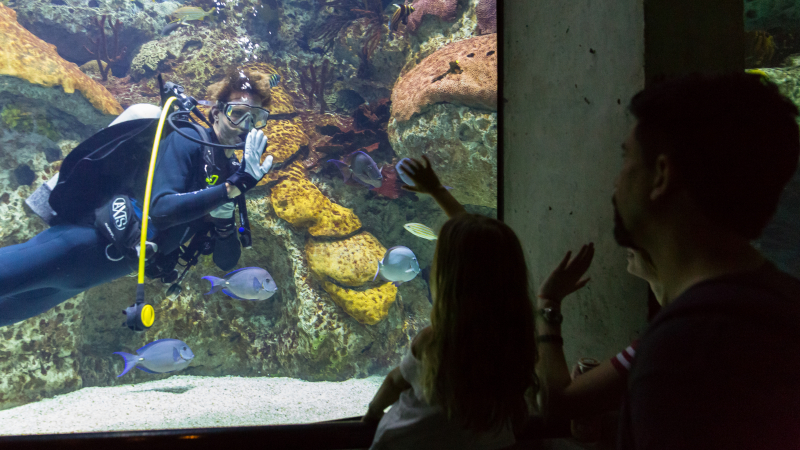
After spending his formative years swimming and surfing in the waters of southern California, it didn’t take long for Rear Admiral Tim Gallaudet to realize that he wanted to make a career out of his love for the ocean. “After immersing myself in the sea, it was clear to me that I would follow no other path,” he recalls. He joined the Navy and earned a bachelor’s degree in oceanography from the U.S. Naval Academy — a degree which he soon supplemented with a master’s and a doctoral degree in oceanography, both from Scripps Institution of Oceanography. During his impressive 32-year career in the Navy, Gallaudet led initiatives ranging from seafloor mapping to disaster relief. He now proudly serves as the acting NOAA Administrator and uses his platform to emphasize that ocean science is incomplete without ocean education. He says that “We need to educate the next generation of ocean leaders to carry the torch.” And to that next generation, he says this: “Do what you love. Then it will never feel like work, and you will do it very well.”
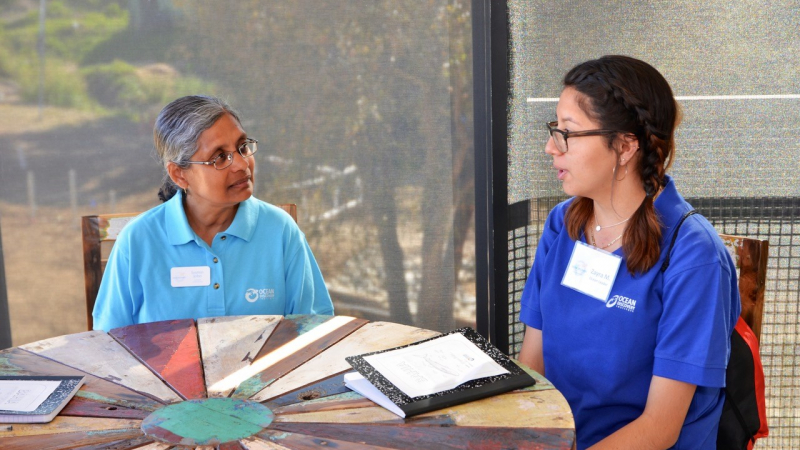
As a physical scientist with NOAA’s Geophysical Fluid Dynamics Laboratory, Jasmin John studies how the ocean might change if we limit the amount of carbon we emit. But this past spring, Jasmin stepped away from her lab in New Jersey to mentor young ocean leaders in City Heights, San Diego. She says that her time as a scientist-in-residence for the Ocean Discovery Institute offsite link was particularly meaningful because she got to give students the mentorship and representation she herself never received or saw. “After a presentation I gave to the students, one of the young ladies came up to me,” Jasmin recalls. “The young lady said, ‘To see a woman of color like you giving a talk, being a mentor, and being a scientist is so inspiring.’ Those are the moments where you know you’re doing good just by doing what you’re doing and being who you are.”
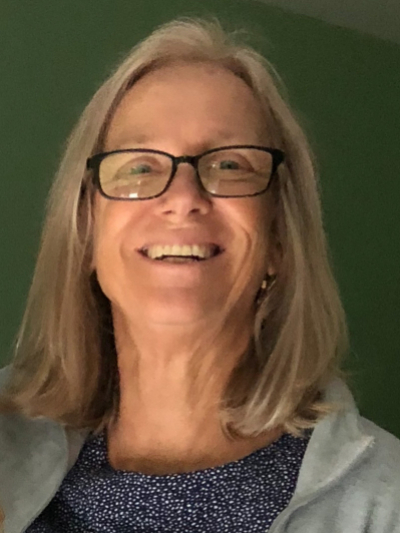
Marcia Taylor serves as a marine advisor for Sea Grant in the U.S. Virgin Islands, where she uses education as a tool to reduce single-use plastics. Though disposable plastics are an environmental challenge everywhere, they are especially problematic in the Virgin Islands where plastic is not recyclable. Marcia worked through NOAA’s Planet Stewards program to empower students at nearby schools to address this issue. After they learned about plastic pollution themselves, these eighty high school students participated in five beach cleanups and led 10 presentations to teach their peers about the issue. “Having the students transfer knowledge to younger students really helped them focus and made the project more meaningful to them,” Marcia reflects. “When I saw them talk to the younger students, I saw enthusiasm that I hadn’t seen before.”
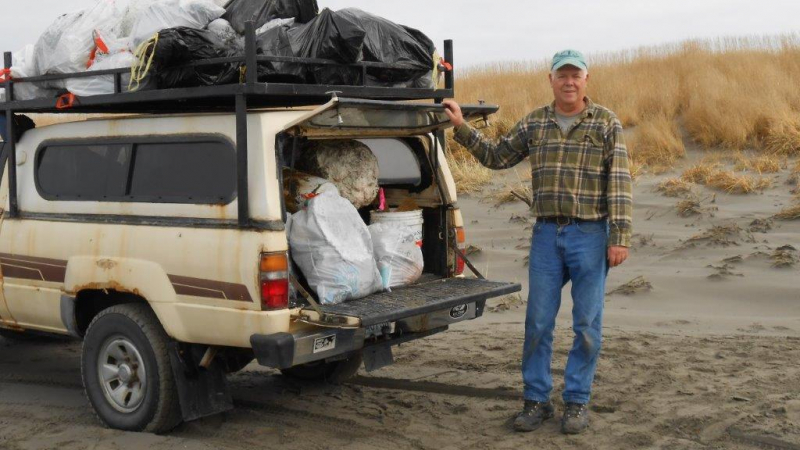
Russ Lewis’s retirement has been anything but uneventful. When he and his wife retired to a beachside residence in Washington state, they began making regular walks along the beach to pick up the litter that kept washing up onshore. Russ hasn’t stopped since. In the past six years, he has logged 957 trips to the beach to pick up litter. Each trip is only a few hours long, but they add up. Russ, his wife, and their fellow volunteers remove somewhere between 6 and 9 tons of debris every year — so much litter that NOAA's Marine Debris Program now sponsors a dumpster to hold it all. Beyond removing litter, Russ also tracks what he finds, sending data to interested researchers around the world. Despite his massive impact on the local beaches, Russ remains humble. “I just use my badly rusted truck to haul garbage from the beach,” he says. “I keep a low profile and keep working away. It’s just people collecting trash. Anyone can do it. Every little bit helps.”
What will you do to celebrate our one global ocean? If you would like to work with NOAA to understand and protect the marine environment, explore our opportunities for students and educators or check out our many volunteer programs.



